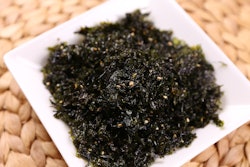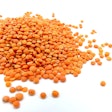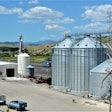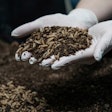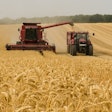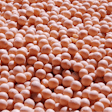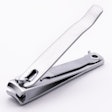
North Dakota State University (NDSU) Extension Agricultural Machine Systems Specialist John Nowatzki will retire on March 1, after serving at NDSU for 27 years.
Originally from Langdon, Nowatzki earned his Bachelor of Science degree in agricultural education from NDSU in 1968. Nowatzki served with the U.S. Army fro 1970 to 1973, including a tour in Vietnam. He then returned to North Dakota to teach vocational agriculture for 15 years.
He returned to NDSU to obtain his master’s in agricultural education in 1974. He served as a mediator with the N.D. Agricultural Mediation Service in Bismarck, then started his career at NDSU in 1994 as a water quality specialist in the Department of Agricultural and Biosystems Engineering.
As a water quality specialist, Nowatzki noted public interest in GIS and mapping, so he started developing in that area. Being able to map surface and subsurface drainage was helpful in being able to explain the impact, and where it would end up. Nowatzki served as a geospatial technology specialist for NDSU Extension from 2003 to 2006, working with applications for crop production for precision soil management, precision nutrient management, and zoned fields.
He became the Agricultural Machine Systems Specialist in 2006. His topic areas included agricultural machinery selection and operation, geospatial technology for precision resource management, conservation tillage technologies, agricultural chemical application technology, energy conservation, and alternative energy use. The position has evolved to emphasize precision agriculture. Currently, there is a resurgence in requests for information related to the impact of farm machinery on soil compaction.
In a notable project, Nowatzki worked with Elbit Systems of America utilizing a large drone flying out of the Hillsboro airport for two years, then from the Casselton airport for a year. “That was an opportunity to work with a company that seized an opportunity to use large drones to collect imagery. It was completely new, so it was something that was fascinating,” he said. “It was certainly an innovative project and a project that provided opportunities for the future.” During the project, drones flew over 100,000 acres several times each year to collect high-resolution imagery. Anything larger than 2.5 inches on the ground was captured in the images, and the entire acreage was flown in just two hours. During the project, farmers used the imagery to create mapping zones, evaluate weed issues throughout the season, address excess moisture issues or configure nutrient applications.
另一个值得注意的项目是部门的工作ith herbicide-resistant weeds. John says, “It has the potential to be the most important work that we’ve done in terms of precision ag because the issue with herbicide-resistant weeds has the potential to immensely disrupt crop production.” He has worked with other faculty and graduate students in identifying weeds using thermal and hyperspectral imagery. Other faculty are now developing a robot to identify weeds and apply specific herbicides to specific weeds for precision weed management.
Other recent program highlights and impacts of Nowatzki’s work include:
- He assisted in obtaining and coordinating a large U.S. Department of Agriculture-funded precision agriculture research grant. The research objectives of the grant focus on precision weed management in field crops, and on developing algorithmic tools for the management of major North Dakota field crops.
- Nowatzki was in great demand for Precision agriculture educational programs on topics including data management, mapping, new technologies, remote sensing, and unmanned aircraft systems (UAS) applications to agriculture locally, regionally and nationally.
- John was involved with the development of an interplanter used to plant cover crop seeds between the rows of growing corn and soybean crops as co-PI of a USDA grant-funded project focusing on using cover crops in field crops in North Dakota. A significant portion of his work was to identify and install a guidance system for the grain cart attached to the interplanter.
- Nowatzki was also in demand for educational programs on topics including UAS sprayer applications in production agriculture, nozzle selection, and drift reduction practices for field crop chemical application.
“机会与无人机,守护神ge ones and the smaller ones, really was an opportunity for me, but it was also an opportunity for our department and our university. Industry has been very interested in looking at potential applications,” Nowatzki said. John said of his career at NDSU, “I’ve very much enjoyed the opportunity to interact with farmers and ranchers, and the opportunity to work with industry.” Nowatzki also appreciated working within the Agricultural and Biosystems Engineering Department, ABEN. “Extension is such a really good place to work, and I found the ABEN Department to be a rewarding place to work, the human relations in our department have been second to none. I’m always impressed. That has been a positive part of my work at NDSU,” he said. He also appreciated his work with other Extension agents, “I’ve never worked with one who wasn’t truly committed to their work,” he said.
During his tenure, Nowatzki was awarded the Governor’s Award for Excellence in Public Service: Pioneer Award for Excellence in Innovation in 2017 for his cutting-edge work in precision agriculture technology, including farm applications for unmanned aerial vehicles, and the NDSU Extension Service Program Excellence Award in 2010. Nowatzki has acquired 14 grants, completed six NDSU Extension publications and 12 refereed journal articles in the last four years.
In his retirement, he hopes to travel to see family who are spread from the West Coast to the East Coast, and to do more of what he enjoys, such as biking, hunting, fishing and reading. Nowatzki also plans to continue serving on the Big Iron Farm Show Committee in West Fargo.







